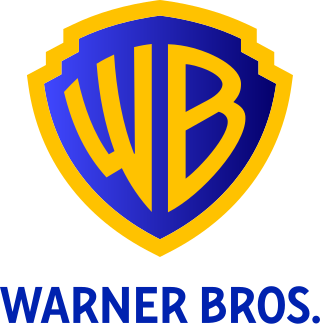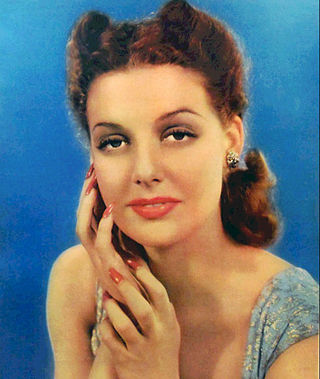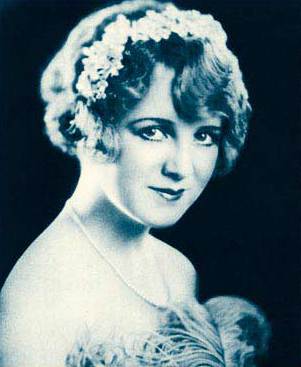Related Research Articles

Warner Bros. Entertainment Inc. is an American film and entertainment studio headquartered at the Warner Bros. Studios complex in Burbank, California, and a subsidiary of Warner Bros. Discovery (WBD). Founded in 1923 by four brothers, Harry, Albert, Sam, and Jack Warner, the company established itself as a leader in the American film industry before diversifying into animation, television, and video games, and is one of the "Big Five" major American film studios, as well as a member of the Motion Picture Association (MPA).

Captain Blood is a 1935 American black-and-white swashbuckling pirate film from First National Pictures and Warner Bros. Pictures, produced by Harry Joe Brown and Gordon Hollingshead, directed by Michael Curtiz and starring Errol Flynn, Olivia de Havilland, Basil Rathbone, and Ross Alexander.

Peter Lorre was a Hungarian and American actor, active first in Europe and later in the United States. He began his stage career in Vienna, in the Austro-Hungarian Empire, before moving to Germany where he worked first on the stage, then in film in Berlin in the late 1920s and early 1930s. Lorre caused an international sensation in the Weimar Republic–era film M (1931), directed by Fritz Lang, in which he portrayed a serial killer who preys on little girls. Known for his timidly devious characters, his appearance, and his accented voice, Lorre was frequently caricaturized during and after his lifetime and the cultural legacy of his persona remains in media today.

Douglas Elton Fairbanks Jr. was an American actor, producer, and decorated naval officer of World War II. He is best-known for starring in such films as The Prisoner of Zenda (1937), Gunga Din (1939), and The Corsican Brothers (1941). He was the son of Douglas Fairbanks and the stepson of Mary Pickford, and his first marriage was to actress Joan Crawford.

Clara Lou "Ann" Sheridan was an American actress and singer. She is best known for her roles in the films San Quentin (1937) with Humphrey Bogart, Angels with Dirty Faces (1938) with James Cagney and Bogart, They Drive by Night (1940) with George Raft and Bogart, City for Conquest (1940) with Cagney and Elia Kazan, The Man Who Came to Dinner (1942) with Bette Davis, Kings Row (1942) with Ronald Reagan, Nora Prentiss (1947), and I Was a Male War Bride (1949) with Cary Grant.

Mary Brian was an American actress who made the transition from silent films to sound films.

Wendy Barrie was a British-American film and television actress.

Pauline Starke was an American silent-film actress.

Marie Pauline Garon was a Canadian silent film, feature film, and stage actress.

Ian Hunter was a Cape Colony-born British actor of stage, film and television.

Dorothea Sally Eilers was an American actress.

Evalyn Knapp was an American film actress of the late 1920s, 1930s and into the 1940s. She was a leading B-movie serial actress in the 1930s. She was the younger sister of the orchestra leader Orville Knapp.
Murray Kinnell was a British-born American actor, recognized for playing smooth, gentlemanly, although rather shady characters. He began acting on the English stage in 1907, toured in the United States from 1912 through 1914, then returned to England where he served in the British Army during World War I. After the war, he emigrated to the US. He appeared in 71 films between the pre-code era of 1930 and 1937. He later served the Screen Actors Guild in several positions for 16 years.

Bright Lights is a 1925 American silent romantic comedy film directed by Robert Z. Leonard. The film is based on the story "A Little Bit of Broadway" by Richard Connell, and stars Charles Ray, who achieved stardom by playing ingenious country boys.
Grand Old Girl is a 1935 American drama film directed by John Robertson from a screenplay by Milton Krims, John Twist, Arthur T. Horman, adapted from a story by Wanda Tuchock. The film stars May Robson, Mary Carlisle, Fred MacMurray, and Alan Hale, other cast members included Ben Alexander.

Gigolette is a 1935 American romance film directed by Charles Lamont from a screenplay and story by Gordon Kahn. The film stars Adrienne Ames, Ralph Bellamy, Donald Cook, and Robert Armstrong.

Freckles is a 1935 American drama film directed by Edward Killy and William Hamilton from a screenplay written by Dorothy Yost, adapted by Mary Mayes from Gene Stratton-Porter's 1904 novel of the same name. Two earlier adaptations of Stratton-Porter's novel had been produced, the first by Paramount in 1917, and the second in 1928 by FBO, both were also titled Freckles. This 1935 version was released by RKO Radio Pictures on October 4, and stars Tom Brown, Virginia Weidler, and Carol Stone.

The First Legion is a 1951 American drama film directed by Douglas Sirk and written by Emmet Lavery. The film stars Charles Boyer, William Demarest, Lyle Bettger, Walter Hampden, Barbara Rush, Wesley Addy, H. B. Warner and Leo G. Carroll. The film was released on April 27, 1951, by United Artists. The film was based on Lavery's play of the same name, which opened on Broadway at the 46th Street Theatre on October 1, 1934. The play, which had no female characters, moved to the Biltmore Theater where it closed January 5, 1935.
Maury Cohen, also known as Maury M. Cohen, was an American film producer most active during the 1930s. He owned one of the Poverty Row studios, Invincible films, which specialized in making low-budget feature films. After leaving film in the early 1940s, Cohen founded and ran the historic dance club in Los Angeles, the Hollywood Palladium.

The Average Woman is a 1924 American silent melodrama film directed by Christy Cabanne and starring Pauline Garon, David Powell, and Harrison Ford. It was released on March 1, 1924.
References
- ↑ "$20 a Week". American Film Institute. Archived from the original on January 7, 2018. Retrieved January 3, 2018.
- ↑ "$20 A WEEK". AFI. Retrieved 18 January 2018.
- ↑ "Burton King Buys Stories". The Film Daily. November 7, 1934. p. 2. Retrieved January 26, 2018.

- ↑ "The Hollywood Scene: Pauline Starke Signed". Motion Picture Herald. December 29, 1934. p. 51. Retrieved January 26, 2018.

- ↑ Ralph Wilk (November 24, 1934). "A Little From "Lots"". The Film Daily. p. 4. Retrieved January 26, 2018.

- ↑ "Pauline Starke Signed". Motion Picture Daily. November 24, 1934. p. 2. Retrieved January 26, 2018.

- ↑ "10 Pictures Planned by Ajax Pictures Corp". The Film Daily. December 10, 1934. p. 2. Retrieved January 26, 2018.

- ↑ "Coming and Going". The Film Daily. December 22, 1934. p. 2. Retrieved January 26, 2018.

- ↑ "Ajax Set for 1935-36". The Film Daily. January 21, 1935. p. 5. Retrieved January 26, 2018.

- ↑ "Reviews of the New Films: "$20 a Week"". The Film Daily. January 22, 1935. p. 4. Retrieved January 26, 2018.
